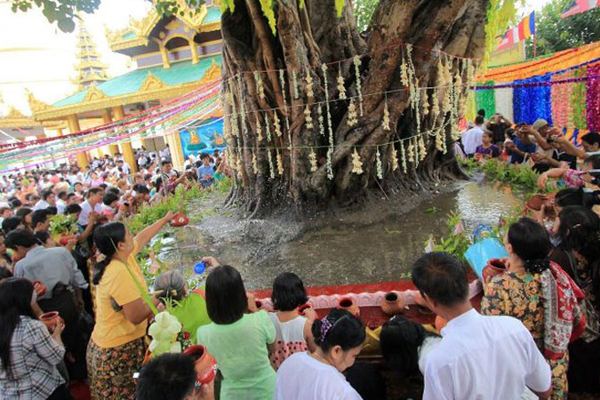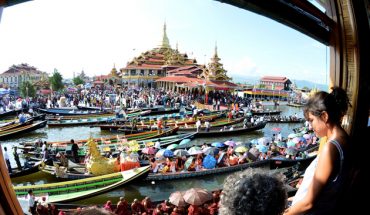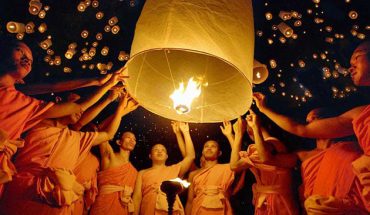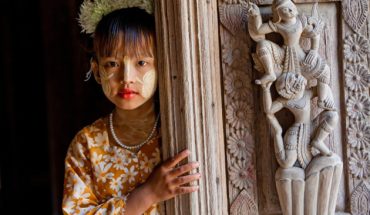Another water-related event held just one month after ‘Thin-gyan’ is the Kason Festival. It falls on the Full moon day of Kason according to the Myanmar Calendar (or in early May of English calendar). The Kason festival is believed to be one of the most important festivals in religious life of Myanmar people. In this season, water in all ponds, lakes and creeks is at the lowest level, and the length of a day is longer than that of night.
All over the Myanmar, men and women of all ages go to pagodas to participate in the water pouring ceremony at the Maha-Bodhi tree. It is the holy Banyan tree under which the Buddha is said to have attained Enlightenment. Since the the Kason Festival takes place at the middle of the hottest season, Myanmar people carrying water pots pour water at the Maha-Bodhi tree to make sure it will not die of drought.
This custom has become an indispensable part in religious life of Myanmar people, the act of pouring water therefore, is an expression of piety and respect shown to the Buddha. Long lines of Buddhist people carry pots of water and Eugenia springs and flowers. The next part of this festival is the chanting of Paritta verses, which is a brief explanation of the rites, and recitation of poems praising the Lord Buddha. Finally, people pour water at the foot of the Bodhi tree. Festive atmosphere is in the air due to light refreshments accompanied by music and dance performed by amateur merry-makers.
For other seasons in a year, the full-moon day of Kason is very important. It marked T three- fold significance which is the Day the Buddha was born, the day He reached Enlightenment and the Day He entered Parinibbana.
For those who are interested in Myanmar’s culture, especially Buddhist people, it is not-to-be-missed chance to discover its unique spiritual culture through this biggest Buddha Day. It would be great if one can visit Myanmar, especially Yangon on this occasion.






